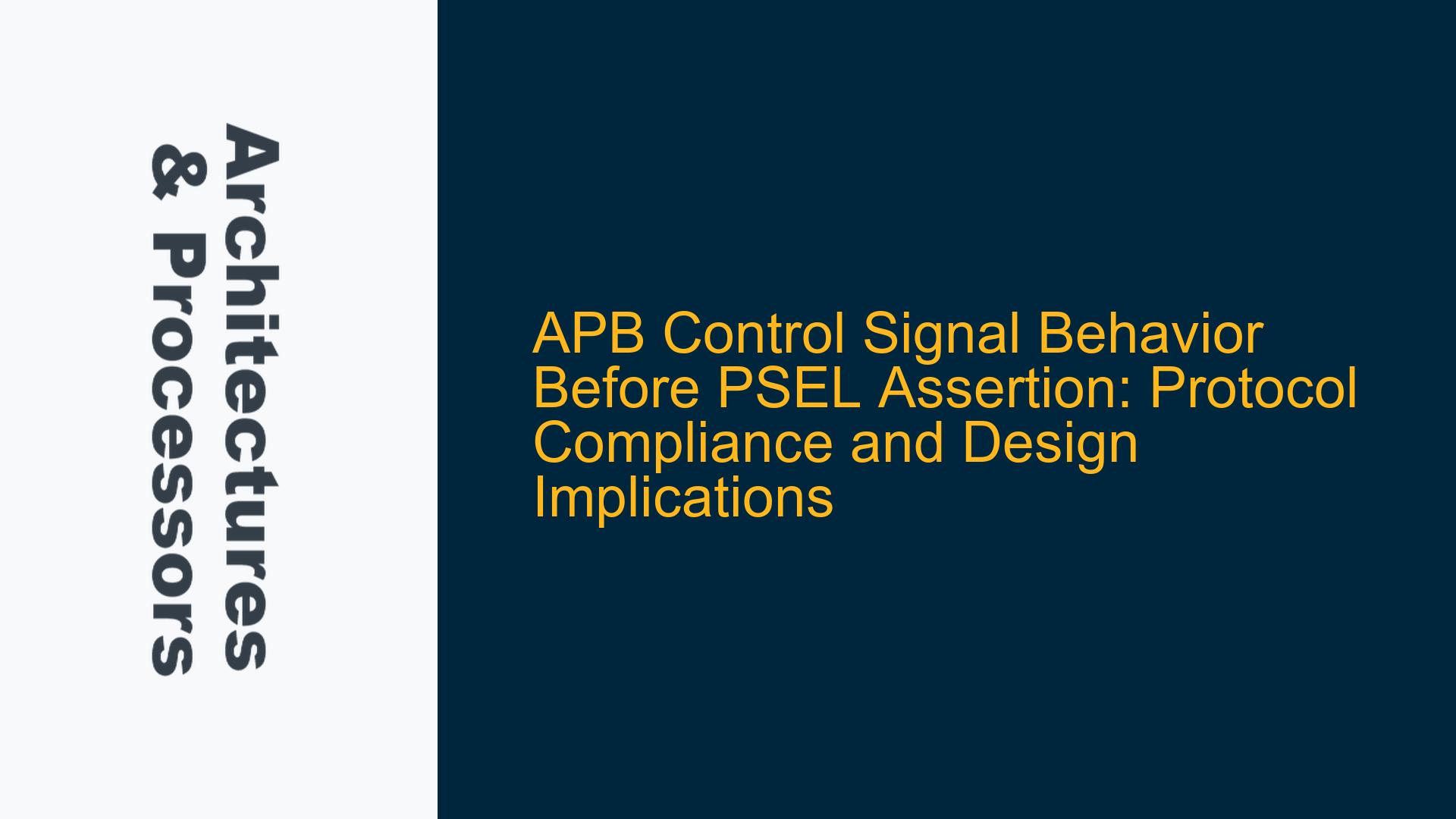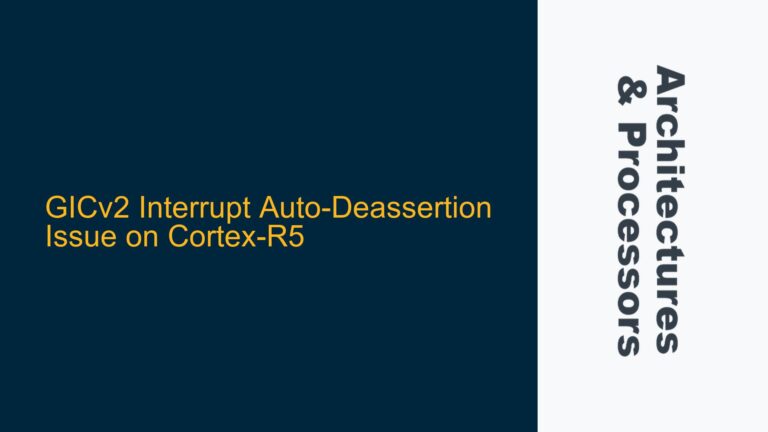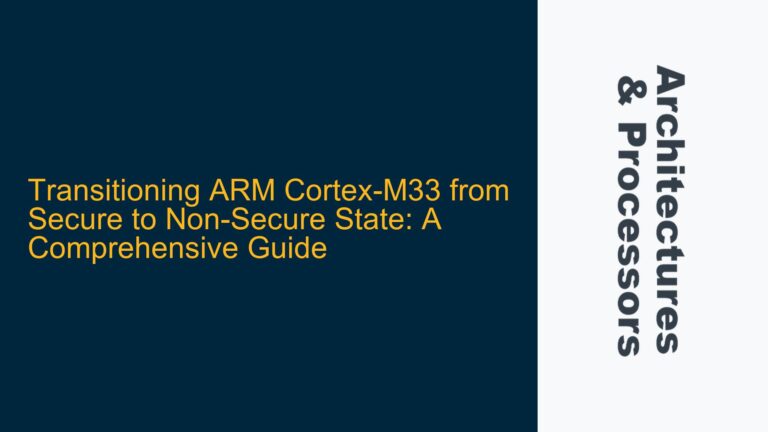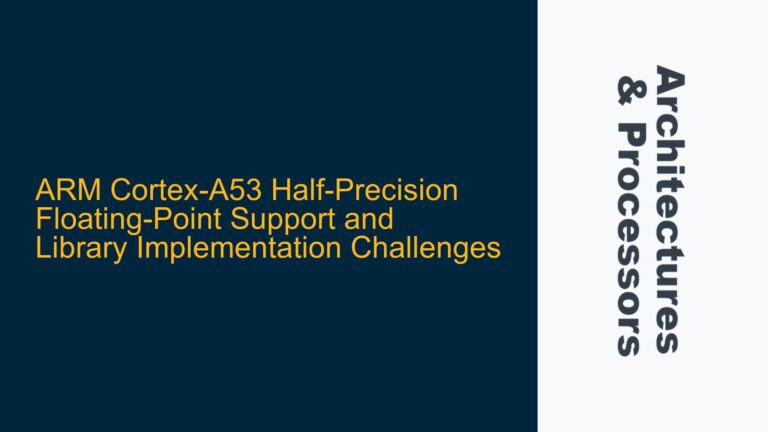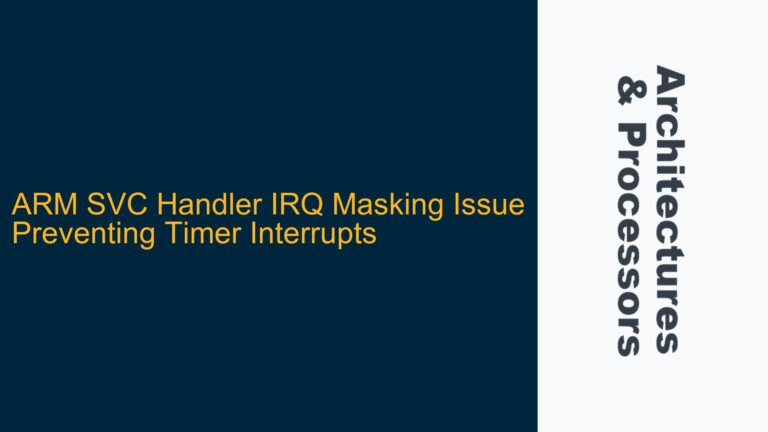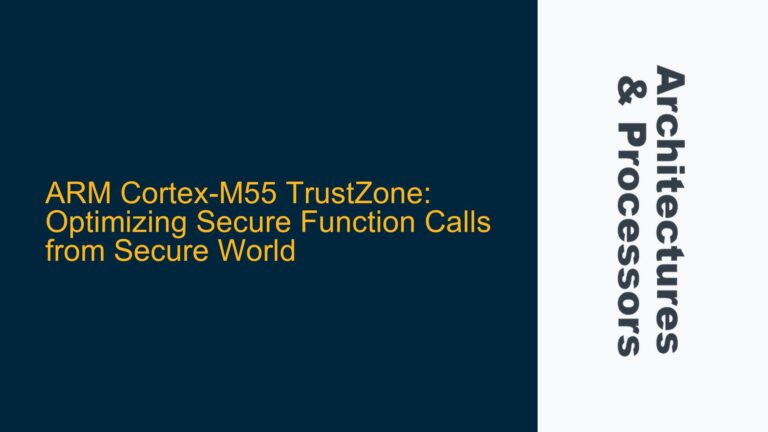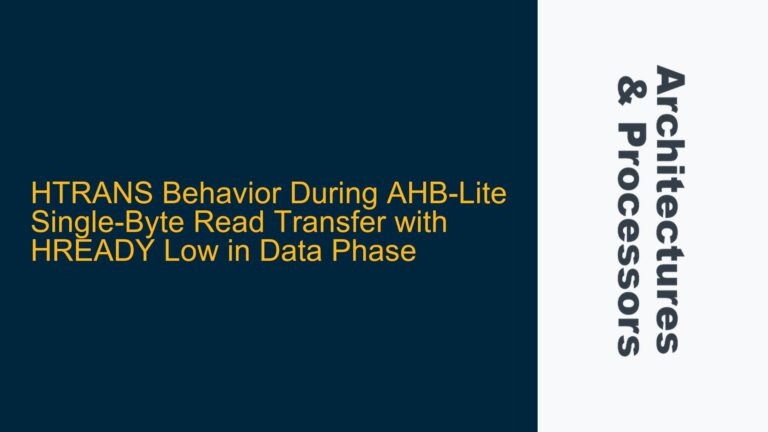APB Control Signals (PWRITE, PADDR, PWDATA) Asserted Before PSEL: Protocol Ambiguity and Real-World Implementations
The Advanced Peripheral Bus (APB) protocol, part of the ARM AMBA family, is widely used for low-bandwidth, low-power peripheral interfacing in SoC designs. A critical aspect of APB protocol compliance is the timing and behavior of control signals such as PWRITE, PADDR, and PWDATA relative to the PSEL (Peripheral Select) signal. According to the APB specification, these signals are expected to change synchronously with the assertion of PSEL. However, in real-world implementations, it is not uncommon to observe PWRITE, PADDR, and PWDATA signals being asserted one or more clock cycles before PSEL is asserted. This behavior raises questions about protocol compliance, design robustness, and potential implications for system-level verification.
The APB protocol defines PSEL as the primary signal that initiates a transfer. When PSEL is asserted, the peripheral is selected, and the control signals (PWRITE, PADDR, PWDATA) are expected to be valid. However, the protocol does not explicitly prohibit these signals from being driven valid before PSEL is asserted. This ambiguity has led to divergent interpretations and implementations across different IP blocks and SoC designs. While some designs adhere strictly to the protocol diagrams, others optimize for timing or power by pre-asserting control signals.
From a protocol standpoint, the key concern is whether pre-asserting control signals violates the APB specification. The specification states that PWRITE, PADDR, and PWDATA are undefined outside of a transfer, implying that their behavior before PSEL assertion is not strictly regulated. However, this lack of regulation can lead to interoperability issues, especially when integrating IP blocks from different vendors or when using third-party verification IP (VIP) that assumes strict protocol adherence.
In real-world designs, pre-asserting control signals can be advantageous for timing closure. For example, in high-frequency designs, driving control signals early can help meet setup time requirements for peripheral registers. Additionally, pre-assertion can reduce power consumption by minimizing signal toggling during idle states. However, these benefits must be weighed against the risk of protocol non-compliance and potential integration challenges.
Potential Causes of Pre-Assertion Behavior: Design Optimizations and Protocol Interpretation
The pre-assertion of APB control signals before PSEL can be attributed to several factors, including design optimizations, timing considerations, and differing interpretations of the APB protocol. Understanding these causes is essential for diagnosing and addressing potential issues in SoC designs.
One common cause is timing optimization. In high-frequency designs, meeting setup and hold times for peripheral registers can be challenging. By driving PWRITE, PADDR, and PWDATA signals early, designers can ensure that these signals are stable and valid when PSEL is asserted. This approach can simplify timing closure and reduce the risk of metastability in peripheral interfaces. However, it also introduces a dependency on the timing relationship between control signals and PSEL, which may not be explicitly covered by the APB specification.
Another factor is power optimization. In low-power designs, minimizing signal toggling is critical for reducing dynamic power consumption. Pre-asserting control signals can help achieve this goal by reducing the number of transitions during idle states. For example, if PWRITE, PADDR, and PWDATA are driven to their final values before PSEL is asserted, they may not need to toggle again during the transfer. This approach can be particularly beneficial in designs with frequent APB transactions, where even small reductions in power consumption can have a significant impact.
Differing interpretations of the APB protocol also contribute to pre-assertion behavior. While the protocol diagrams in the APB specification show control signals changing synchronously with PSEL, the text does not explicitly prohibit pre-assertion. This ambiguity allows designers to interpret the protocol in ways that best suit their design goals. For example, some designers may view pre-assertion as a valid optimization technique, while others may consider it a deviation from the intended protocol behavior.
Finally, legacy design practices and IP reuse can also lead to pre-assertion behavior. In some cases, pre-assertion may have been implemented in older designs to address specific timing or power challenges. When these designs are reused or integrated into new SoCs, the pre-assertion behavior may persist, even if it is no longer necessary or desirable. This highlights the importance of thorough design review and protocol compliance checks when reusing IP blocks.
Addressing Pre-Assertion Behavior: Verification Strategies and Design Recommendations
To address the challenges associated with pre-assertion of APB control signals, designers and verification engineers must adopt a systematic approach that balances protocol compliance, design optimization, and verification coverage. The following steps provide a comprehensive framework for diagnosing and resolving issues related to pre-assertion behavior.
First, it is essential to review the APB specification and understand the intended behavior of control signals relative to PSEL. While the protocol does not explicitly prohibit pre-assertion, it is important to ensure that any deviations from the protocol diagrams are well-justified and documented. This includes identifying the specific design optimizations or timing considerations that necessitate pre-assertion and evaluating their impact on system-level behavior.
Next, designers should conduct a thorough timing analysis to determine whether pre-assertion is necessary for meeting setup and hold times. If pre-assertion is required, it should be implemented in a way that minimizes the risk of protocol non-compliance. For example, control signals can be driven early but held stable until PSEL is asserted, ensuring that they are valid and consistent with the protocol’s timing requirements.
From a verification perspective, it is critical to develop test cases that cover both standard and pre-assertion scenarios. This includes creating directed tests that explicitly validate the behavior of control signals before and after PSEL assertion, as well as random tests that explore corner cases and edge conditions. Verification IP (VIP) should be configured to support pre-assertion behavior, either through parameterization or custom extensions, to ensure accurate protocol checking and coverage.
In addition to functional verification, designers should consider the impact of pre-assertion on power consumption and signal integrity. Power analysis tools can be used to evaluate the dynamic power savings achieved through pre-assertion, while signal integrity analysis can identify potential issues such as crosstalk or electromagnetic interference (EMI) caused by early signal transitions. These analyses should be performed iteratively to optimize the design for both performance and reliability.
Finally, it is important to document any deviations from the APB protocol and communicate them to all stakeholders, including IP vendors, verification teams, and system integrators. This ensures that all parties are aware of the design’s behavior and can take appropriate measures to address potential integration challenges. Clear documentation also facilitates future design reuse and reduces the risk of misinterpretation or misimplementation.
By following these steps, designers and verification engineers can effectively address the challenges associated with pre-assertion of APB control signals, ensuring robust and compliant SoC designs. The key is to strike a balance between protocol adherence and design optimization, leveraging the flexibility of the APB specification while maintaining system-level integrity and reliability.
